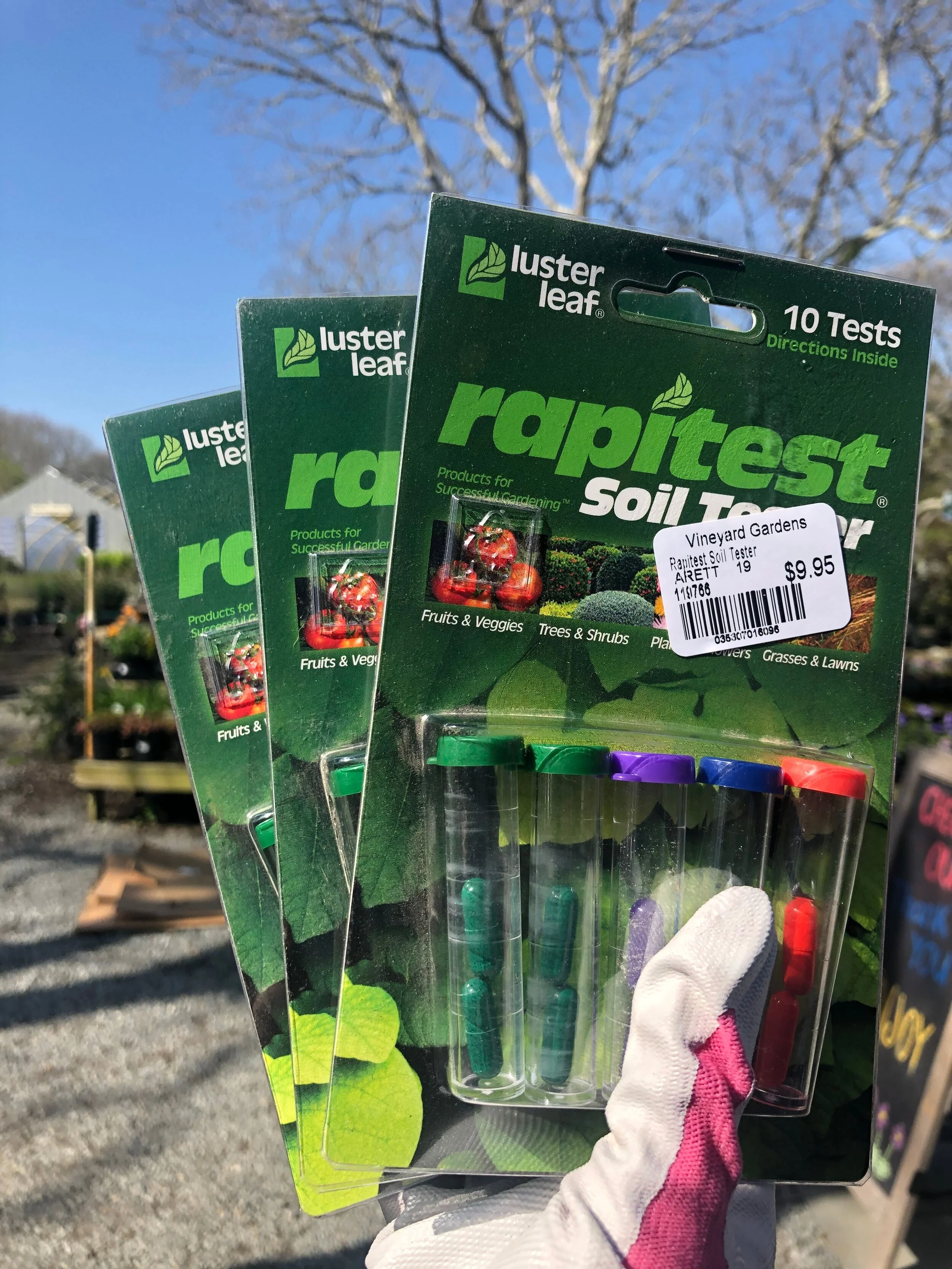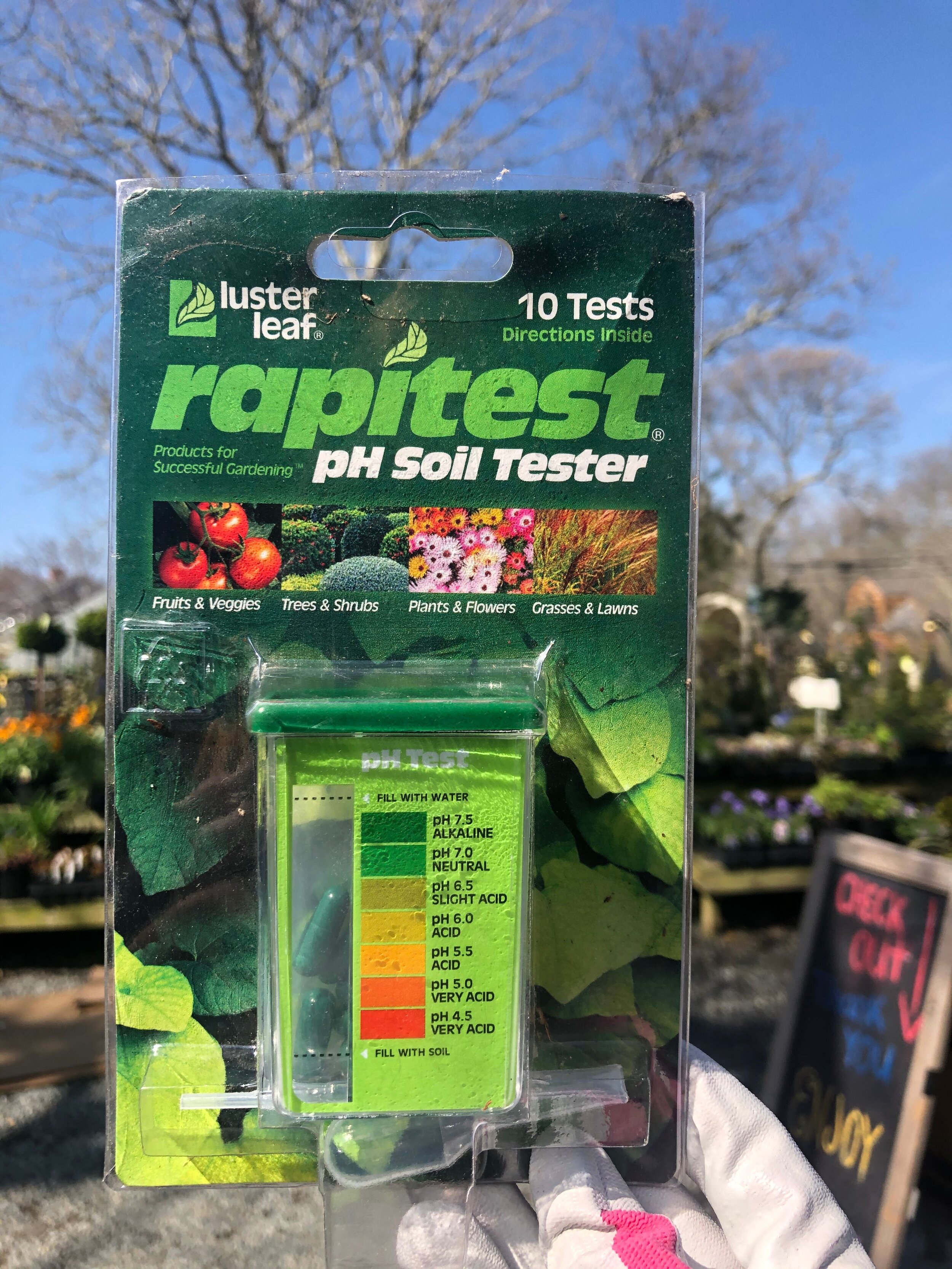“It is always a good idea to test the soil for your lawns, flowers, vegetable gardens and almost anything you’re trying to grow!” Chuck Wiley, co-owner of Vineyard Gardens
Soil samples can be sent to the University of Massachusetts. The test will tell you what is in your soil, the amount and then what to add. This can save you money and most importantly protect our environment by not overusing fertilizer.
Fertilizer bags have three numbers showing the percentage of nitrogen, phosphorus and potassium in the bag. A bag labeled 5-10-5 is 5% nitrogen, 10% phosphorus, and 5% potassium.
Nitrogen is the element usually most needed to be added for plant health, as it is either used up by plants or can be leached out of the soil with rain and irrigation.
Phosphorous and potassium once added are more stable in the soil and usually only need to be added every two or three years.
These three nutrients are in most of the garden and lawn fertilizers we sell. We sell several lawn fertilizers with a 0 middle number, meaning no phosphorus, because that nutrient can cause problems with our ponds by encouraging algae blooms.
Organic fertilizers are slow release and also add some organic matter to the soil. Lawn fertilizers, like Jonathan Green Green-up 20-0-3, often have a higher first number as nitrogen is what causes them to be darker green, faster growing and healthier. Most vegetables like a lower first number Espoma Organic Garden-tone 3-4-4 to encourage fruiting like tomatoes and squash.
** Now is the last chance this season to apply Jonathan Green Green-Up Crabgrass Preventer before moving onto step 2 Jonathan Green Green-Up Weed and Feed!
photo credit: keith kurman
THE IMPORTANCE OF A pH TEST
A pH test tells us how acidic or alkaline our soils are
Numbers under 7 are acidic
Numbers over 7 are basic or alkaline
When soils are at or near neutral most nutrients are more easily taken up by plants and at the high range of acid or basic some nutrients are unavailable to plants even if they are in the soil. Our soils tend to be acidic which is good for blueberries, most evergreens , potatoes and Blue Mop head Hydrangeas, which are our traditional August flowering hydrangeas and Nikko Blue and Endless summer being the most popular. The reason for wanting low pH for the hydrangeas is this causes the flowers to be bluer. High pH turns them pinker and neutral pH gives them a color between the two. This is the only plant I know that the flower color is affected by the pH which allows aluminum in the soil to be more readily taken up at lower ph.
If you want bluer flowers add sulfur or aluminum sulfate, ideally mixed into the soil when planting. You can add these materials to existing plants but it will take longer for them to have an effect on the color. If you want pink flowers, add lime to the soil. Most vegetables like a neutral soil, with the exception of potatoes which are more prone to a particular disease at higher pH. I like to keep a special area in the garden for them that I don't lime. Lawns like the pH to be close to neutral so light yearly liming is recommend here.











